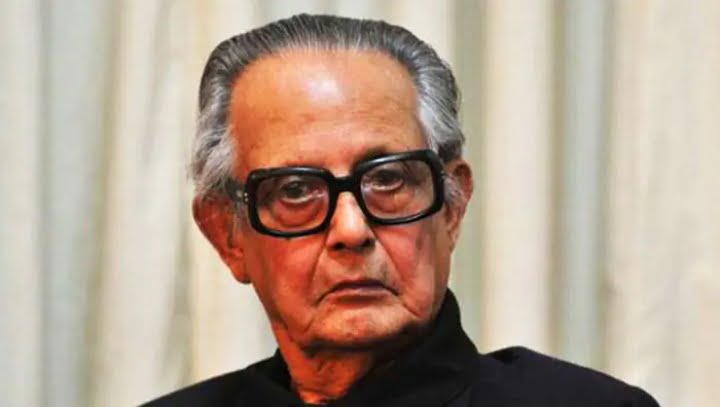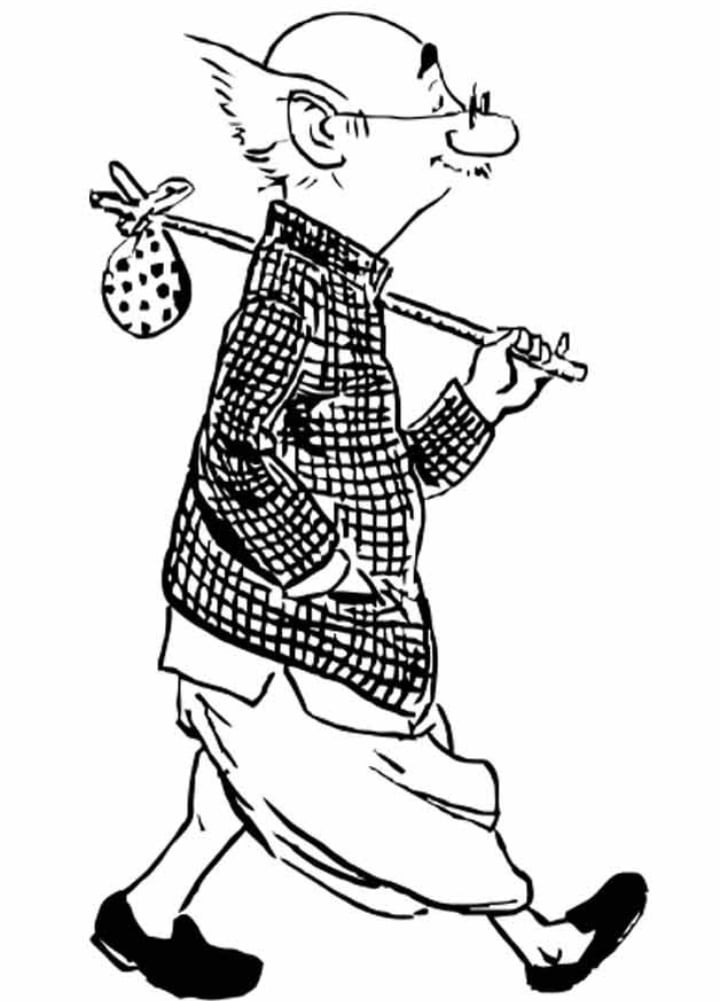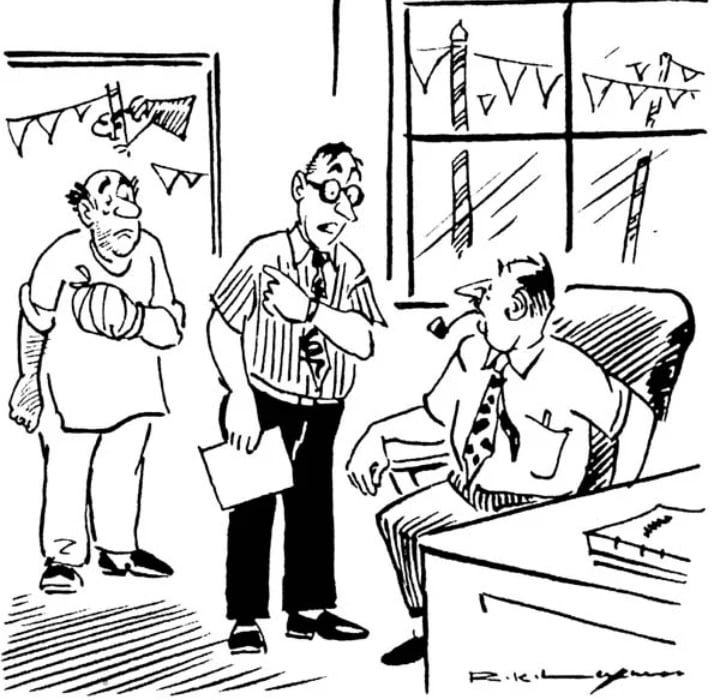Younger to the writer who gave us epics like Malgudi days, we have R.K. Laxman! The man, the commoner, and the common man!

A Small Overview
I drew objects that caught my eye outside the window of my room – the dry twigs, leaves and lizard-like creatures crawling about, the servant chopping firewood and, of course, and number of crows in various postures on the rooftops of the buildings oppositeR. K. Laxman
R. K. Laxman began his career as a freelance cartoonist, usually for small-town newspapers and publications. Further, he demonstrated his older brother R. K. Narayan’s stories in The Hindu as a college student.
His maiden full-time employment was as a political cartoonist for the Mumbai-based newspaper The Free Press Journal. Subsequently, Laxman joined The Times of India, where he became famous for his portrayal of The Common Man, which proved to be a watershed moment in Laxman’s time on earth.
Laxman wrote a lot of short stories, essays, and travel articles, and some of them were collected in the book The Distorted Mirror in 2003. He also wrote The Hotel Riviera (1988) and The Messenger in 1993, as well as The Tunnel of Time, an autobiography in 1998. A number of collections of Laxman’s cartoons have also been published. He received the Padma Vibhushan, India’s second highest civilian honour, in 2005.
The Common Man
The Common Man is usually a mute observer of the events in the comic. Hence, the perplexed Common Man, dressed in a dhoti and a plaid jacket, is no pawn: his acute insights overlook no aspect of the political mess.

R. K. Laxman, the Indian author and cartoonist, invented the character The Common Man. Through a daily comic strip, You Said It in The Times of India, the Common Man has reflected the ambitions, goals, concerns, and possibly even follies of the average Indian for nearly half a century. The first issue of the comic was published in 1951.
Laxman attempted to reflect diverse states and cultures in India when he began drawing cartoons for The Times of India. He began to sketch less and fewer background people in order to make deadlines. Until there was only one left: the now-famous Common Man.
The Distorted Mirror
Some of his best short tales, essays, and travelogues are available in The Distorted Mirror. The book kicks off with ‘An Accident,’ a unique mystery in which the murder weapon is a newspaper.
In other stories, we meet Gopal, a youngster from a regular small town who is altered one day when the Viceroy comes to town. Shantha, a little girl who discovers an unusual discovery during a wedding. And Bhasker, a writer who is faced by his history. Laxman’s ability to describe a character or a situation with a few delicate strokes and filled with his typical wit distinguishes each narrative.
A Vote For Laughter
A Vote for Laughter includes a hundred classic Common Man cartoons about political subjects, ranging from party meetings, political ads, and Diplomatic progressions to cabinet reshuffles, equestrian trading, and international tours, not to mention the activity that defines the Indian politician, according to Laxman: the urge to rush to the House well.
These are complemented with a collection of a hundred of the greatest political jokes from around the world.A Vote for Laughter will amuse anyone who appreciates seeing the comical side of modern politics, even as we brag about being the world’s largest democracy.
The Very Best Of Common Man
Laxman’s Common Man caricatures cover the entire spectrum of current Indian experience, from financial crises to householder woes, from political instability to systemic corruption.
Thus, this special collection of the 100 most memorable Common Man cartoons is a tribute to India’s most popular cartoonist and one of the most striking voices reflecting on Indian contemporary life.
Laugh With Laxman

The book more than lives up to its name. It is plenty of laughter for the reader. Some cartoons stick with you for a long time. There’s one where the guy passes out and the other person tells the doctor that he passed out while bravely telling the doctor about the changes he’s going to make in his life. That was strangely familiar. How often would we correlate with higher, then become terrified of it and withdraw?
This book contains full with jokes in addition to cartoons. Consequently, it alternates. Cartoons appear on odd-numbered pages, whereas jokes appear on even-numbered pages. Lastly, they complement each other well. This is a great book to read to cleanse your thoughts.
Servants Of India
India’s most famous comic takes on the topic of domestic assistance and tells us ten amusing stories about some memorable eccentrics. Ganesh, a freelance journalist attempting to create a feature article about servants he has met, assembles the stories. As his plot goes, a beautifully elaborated tale with wonderful characters unfolds. Swami, the cook, discovers his true calling as a godman-
Kumar, who abandons his household duties to pursue his tinsel-town dreams. Further, there is Anthony, the driver. He supplements his income by giving rides to strangers. And Shanti, the maid. Whose life is turned upside down by the neighbor’s servant’s obsession with her. Ramaswami, a faithful retainer who suddenly reappears to his employer’s dismay. Months after he was assumed drowned.
Share with your friends





